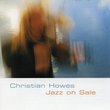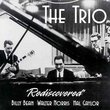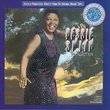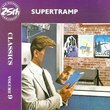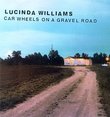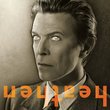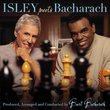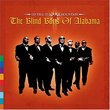| All Artists: Sergey Rachmaninov, Eugene Ormandy, New York Philharmonic, Vladimir Horowitz Title: Rachmaninov: Piano Concerto No 3 Members Wishing: 0 Total Copies: 0 Label: RCA Release Date: 4/20/2004 Genre: Classical Styles: Forms & Genres, Concertos, Sonatas, Historical Periods, Modern, 20th, & 21st Century, Instruments, Keyboard, Symphonies Number of Discs: 1 SwapaCD Credits: 1 UPC: 828765941129 |
Search - Sergey Rachmaninov, Eugene Ormandy, New York Philharmonic :: Rachmaninov: Piano Concerto No 3
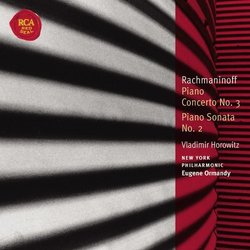 | Sergey Rachmaninov, Eugene Ormandy, New York Philharmonic Rachmaninov: Piano Concerto No 3 Genre: Classical |
Larger Image |
CD DetailsSimilar CDs
Similarly Requested CDs
|
CD ReviewsA Valedictory Hank Drake | Cleveland, OH United States | 06/12/2004 (5 out of 5 stars) "RCA/BMG is apparently taking a cue from Sony's Essential Classics series by reissuing popular recordings from their classical catalogue at mid-price.This version of Rachmaninoff's Third Concerto was originally recorded live (with touch-ups) in January of 1978 and released about three weeks after the concert. By rushing the LP into stores, RCA was able to cash in on the publicity of Horowitz's golden jubilee, but the sound on the original release was very poor indeed. The piano was miked too closely, and the orchestra mix was very poor. The CD released in the mid-1980s was a great improvement over the LP, but the sonics were problematic there also. The piano was mixed down too severely and seemed to recede behind the orchestra in some passages. This new High Performance reissue is a vast improvement over both earlier versions. The balance problems have been solved, and both piano and orchestra have a much warmer, deeper sound. The dynamic range has been greatly opened up--the final timpani THWACK at the end of the Concerto is quite startling. As for the performance, this remains my sentimental favorite--even though Horowitz was in better shape in the 1951 version with Reiner than he was in 1978. (He was 74 when this recording was made.) There is something about Horowitz's phrasing, his ability to vary the tempo without losing hold of the basic pulse, and his mixing of inner voices that seems so right. It is more than mere piano playing, it is the art of PERFORMANCE. Bringing the music to life is so much more than putting the right finger in the right place at the right time--and Horowitz was a master of this elusive art. The Rachmaninoff Third Concerto was undoubtedly the greatest piano concerto of the 20th century--and this is my desert island performance.The Sonata was recorded in concert in 1980. Horowitz plays his own "compromise" version of the Sonata--which is an improvement over the rambling 1913 original and eviscerated 1931 editions. It's a pity that no Horowitz Performing Edition was ever published. Personally, I prefer Horowitz's lithe, pantherlike 1968 recording on Sony to the brooding, moody performance heard here. The sound on the Sony disc is also superior, but RCA has again improved the sound over earlier issues. The piano sounds warmer and less tinny, and the dynamic range is greatly increased. This disc is a must for all piano enthusiasts." Horowitz's Signature Piece But With Great Sound David M. Garrett | San Antonio, Texas USA | 03/30/2005 (5 out of 5 stars) "As many, I am torn between the Reiner/RCA and Ormandy/New York performances of Rachmaninov's Third Concerto with Vladimir Horowitz. One must balance the prime performance and mediocre sound of the former with the valedictory playing but much-improved sound of this remastered edition. As noted by Mr. Drake in his review, this reissue has sparkling sound with balance issues alleviated. The result is a clear, warmer sonic picture between orchestra and piano. And the performance... perhaps not as much "on game" as 1951 but, nevertheless, superb. Horowitz's earlier performance is historic and the sine qua non of Rachmaninov 3rds; however, this Red Seal Classic is a good choice. Just as Rubinstein ascends to new heights in his Chopin readings, Horowitz was made to play Rachmaninov, and his "art" is the result. The Rachmaninov Sonata is a delightful "makeweight" for this CD, although recorded much later (1980). Unless you are a collector of Horowitz master performances, I would give this CD strong consideration. " Rachmaninoff's Two Great Interpreters in Collaboration Interplanetary Funksmanship | Vanilla Suburbs, USA | 09/13/2004 (5 out of 5 stars) "This masterfully remastered version of Rachmaninoff's Third Concerto was given on the 50th anniversary of Russian Pianist Vladimir Horowitz' American debut. Though not preferred by most critics to his 1951 recording with Reiner and the RCA Symphony Orchestra, this is by far Horowitz' most polished, emotional and powerful performance - full of cantabile and warmth, yet never lacking in the pyrotechnics for which Volodya was so famous. His treatment of the concerto is actually closer to his 1930 recording with Albert Coates and the London Symphony Orchestra. A number of critics have pointed out that some portions of this recording were cut in the studio following the actual concert because Horowitz made a few mistakes. That's all good and well, but this review is of the final, edited disc, not the concert itself.
How fortunate we are, as well, to have Rachmaninoff's close friend Eugene Ormandy as conductor for this eventful recording - this is the only available recording of Rachmaninoff's two greatest champions in collaboration. This, in fact, is my favourite classical recording - period. It documents Horowitz' first appearance with an orchestra since 1953 and one can sense the anticipation from the opening chords of hearing what Horowitz would come up with. This piece has been long known as Horowitz' warhorse, but for the first time, Horowitz does not pounce upon this great work immediately with his explosive pianism. Instead of attacking the opening movement (Allegro ma non tanto) with the linear thrust of sound for which he was famous, here Horowitz delivers a subtle, reflective rendering. It is as though Horowitz has been holding back this concerto for twenty-five years, and doesn't want to let it go; each note is imbued with urgency and passion - flowing from Horowitz' fingers like so many precious gems and gold pieces. His buildup to the cadenza is done superbly (Horowitz plays the original version, rather than the more virtuosic ossias. Commented Horowitz about his choice of cadenza, "I play the original cadenza in the first movement. Rachmaninoff always played it too. You know, the cadenza really builds up to the end of the concerto. The alternate cadenza is like an ending in itself. It's not good to end the concerto before it's over!") Eugene Ormandy's conducting is equally commanding and brilliant. I can only imagine what was going through his mind as he conducted this piece, which he had almost forty years before recorded with Rachmaninoff himself. While the strings are starker than those of the Philadelphia Orchestra, Ormandy skillfully bends the will of the New York Philharmonic to Horowitz' playing: Where Horowitz takes a relaxed tempo, the orchestra gives him plenty of room, playing in refrain off his melodies. Two examples of this are the simple, eloquent flute solo coming off the heels of Horowitz' cadenza in the first movement, and the undercurrent of the lower strings in the second (Intermezzo: Adagio) over which Horowitz conjures from his famed Steinway the entire range of his vast pianistic emotion. Yet, when Horowitz explodes into flurries of chordal progression and crescendi, the Philharmonic brings in the air support he needs to pull off this concerto of massive and heroic proportions. In the finale (Alla Breve), all of the tentativeness and anxiety of the previous two movements are shed as Horowitz and Ormandy build to finale's climax. Deftly they work in unison, each passage building upon another suspensefully, tautly, the tempo accelerating ever so slightly to the impassioned conclusion. The last two minutes of the concerto are beautifully and triumphantly delivered, the brass and timpani playing in staccatoed counterpoint to Horowitz' piano, which ardently ascends in legato to the pinnacle of the concerto. This performance, moreso than any other, brings out the fully romantic nature of this concerto.When the concerto is finished, you suddenly realise that the sense of rapture and deliverance you had felt has not left you. And when the last notes reverberate from your speakers, you won't know whether the thunderous ovation you hear is coming from the Carnegie Hall audience, or from within. The second selection is the Second Piano Sonata, which was recorded in 1980. As with the Third Concerto, this is a heavier and slower rendition than his 1968 Carnegie Hall recording, but I prefer the first movement on this one. It's more reflective, and the second movement is played with simple honesty of feeling. The finale is more of a massive cluster of notes than the 1968, but it is a good alternative. Even when Horowitz was a little off, still no-one could touch him. His own edited version of the 1913 and 1931 Rachmaninoff versions is the best I've heard, and wish Boosey and Hawkes would print a "Horowitz Edition." His grasp of Rachmaninoff was immediate and intuitive. " |

